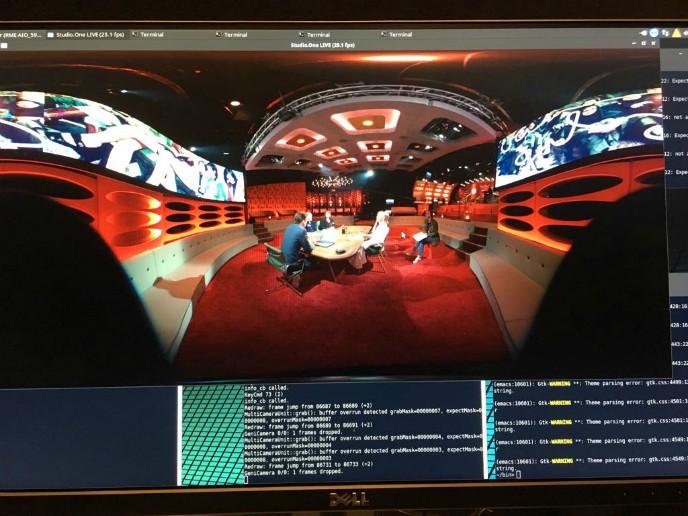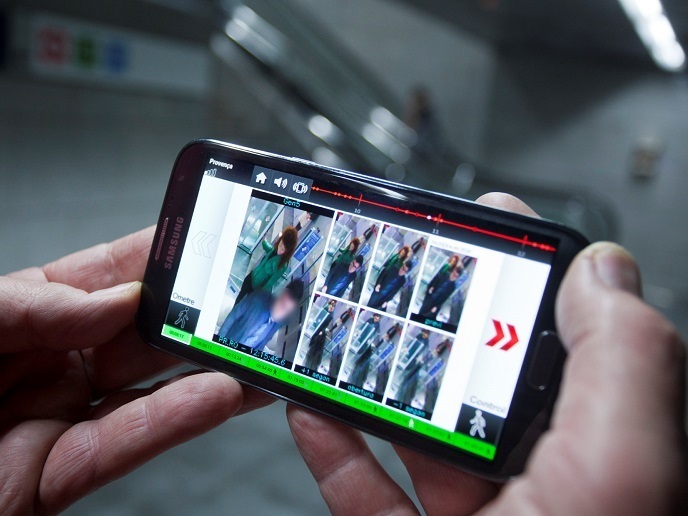Cutting-edge toolset creates immersive multiscreen video experiences
Most European TV consumers watch programmes in a multi-display environment. Their attention is generally divided between these very different information streams. To date, broadcasters haven’t been able to seamlessly integrate formats such as web-based texts, mobile apps and conventional broadcast TV. The market arrival of immersive head-mounted displays introduces new possibilities, but also challenges. Immersive displays must fulfil radically different audience requirements compared to traditional broadcast TV and social media. In addition, they test the conventions of traditional audiovisual language. The EU-funded ImmersiaTV project delivered a novel form of broadcast content that matches the demands of immersive displays and can be shared with tablet and traditional TV consumers. “We explored new forms of digital storytelling and broadcast production by putting omnidirectional video at the centre of content creation, production and distribution,” says project coordinator Sergi Fernandez. Omnidirectional video allows users to explore and navigate audiovisual scenes by freely choosing viewpoint and viewing direction. “ImmersiaTV delivers a fully inclusive experience that integrates the specificities of immersive displays within the contemporary living room.” Pioneering toolset covers entire audiovisual value chain Project partners designed an end-to-end toolset to create multiscreen immersive experiences that address the different phases of content creation: ideation, production, distribution and consumption. It enables content creators and distributors to generate multiscreen audiovisual experiences based on directive and omnidirectional video. The toolset is comprised of several tools and components. A production set of capture devices and edition tools allow professional users to produce experiences that integrate omnidirectional video streams within a carefully constructed narrative structure. This is done across target devices for both offline and live productions. “ImmersiaTV facilitates enormously the task of creating multiscreen video experiences for live and offline contexts in all the different stages of content production and distribution,” adds Fernandez. A set of distribution and reception components includes two players that are able to reproduce directive and omnidirectional streams. Both players have the internal intelligence to understand the scene description format designed in ImmersiaTV. Another component is the audio sync module, a tool for supporting synchronisation among devices that can’t be achieved by a network. Lastly, the session manager is a stand-alone application that maintains consistency between the reproduction times of different devices in a given session. “We have proposed a solution that offers end users a coherent audiovisual experience across head-mounted displays, second screens and the traditional TV set, instead of having their attention divided across them,” explains Fernandez. This new experience seamlessly integrates with and further augments traditional TV and second screen consumer habits. “The audience will still be able to watch TV sitting on their couch or tweet comments about it. However, the audience will also be able to use immersive displays to feel like they are inside the audiovisual stream.” “In the coming years, we expect hybrid TV applications to flourish,” concludes Fernandez. “ImmersiaTV offers an excellent opportunity for broadcasters and content creators to attract younger audiences and offer enhanced services that don’t distract from but complement the main content still served on a framed screen known as TV.”
Keywords
ImmersiaTV, TV, broadcast, audiovisual, immersive displays, omnidirectional video, second screens, head-mounted displays, content creators







